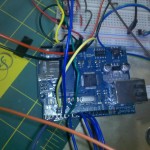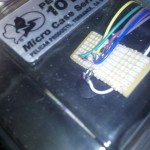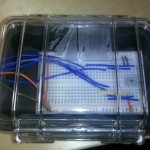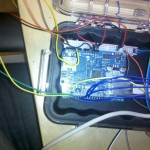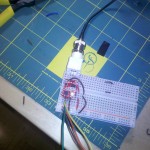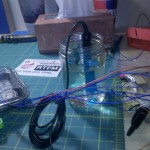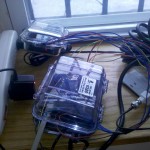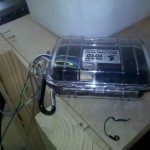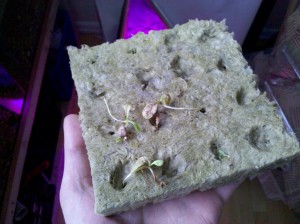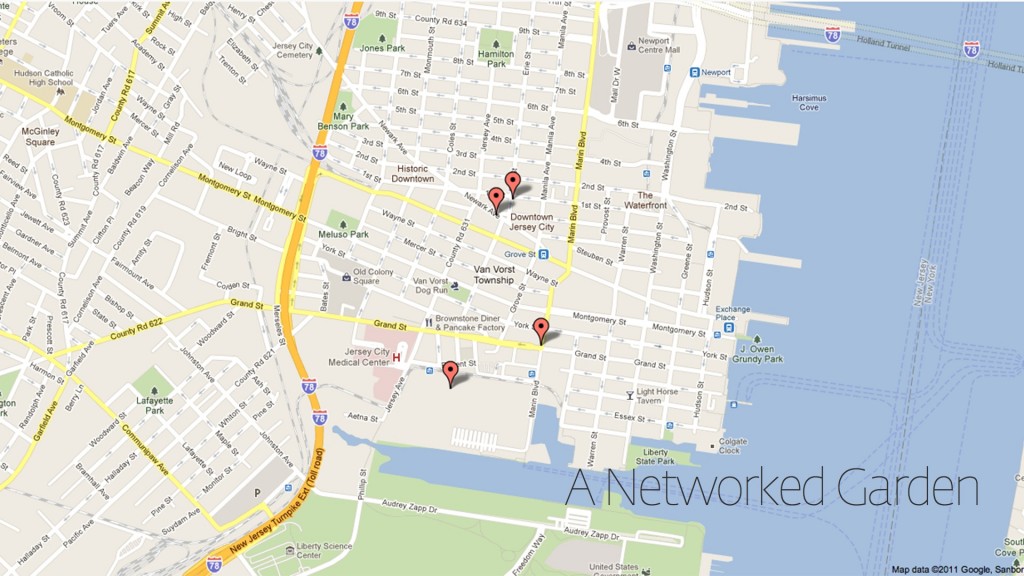Its been quite a busy week, Monday morning arrived on schedule with a surprise. A giant leak on the floor! Of course this became priority number one, finding the leak and stopping it. In the end this leak provided a turning point after analysis of my failed prototypes inevitably spawning a change in direction.
During the past weeks prototypes proved hopeful; successfully using the arduino to control solenoid valves. Solenoids provided the ability to have water continually recirculating for fish while intermittently watering plant beds, augmenting a hydroponic method known as an Ebb & Flow System (EFS). An EFS is achieved by filling and draining a grow bed with nutrient rich water. The bed is filled and drained every 15-30 minutes depending on climate. The modification to the EFS was in the continual flow of water for fish. Generally in an aquaponic EFS a bed is filled and drained as the only filtration for the fish. When the system is not running the water sits stagnent, generally with an aerator for oxygenation. The solenoids were a means to circumvent all stagnant water in an EFS providing continual flow from the tank to the filter. The hypothesis was to generate more oxygen, remove ammonia( fish waste ) through its conversion into Nitrates( plant food ).
Implementing the flow control into the EFS illuminated 3 main issues: 1. Wire tensions 2. Circuit/Water Safety 3. Filtration Methods. The areas of insight provided a new more cohesive direction for the ecosystem itself.
Wire tensions proved to be a big hurdle; with limited space the connections were pulled causing solenoid miss fires. A pretty big issue when these valves are intended to regulate watering cycles. After re-soldering the devices, with extra slack, the prototype was re-tested. But, again a fail.
Upon circuit analysis a flaw in the system was discovered. When a solenoid was the lowest resting point for water and the valve shut off, it trapped liquid in the tube above it. Eventually, this water dripped (slowly) on to the valve and caused more malfunctions – luckily not shorting out the valves. After this point the valves no longer fired as individuals, but only fired synchronously, the opposite of their intended function within the system. This prompted a day long investigation, where each part was dismantled, analyzed and reassembled. The task resulted in an unsuccessful diagnosis, the only outcome was to realization that the circuit must be rebuilt.
Before pushing further down the same path, it became apparent that there might be another means to achieve the goal of continuous flow. This led to the inquiry of other aquaponic filtration methods (in this sense also nutrient delivery methods). The EFS is one way to achieve a thriving ecosystem, but has flaws in aquarium based aquaponics. An EFS uses the bed as its filter however this means that large waste particles are not removed, and water clarity can suffer although it is nutrient rich.
Research presented itself in the form of an online video (via the urban farming guys) and a direction to clearer water, through the use of a raft system (RS). Raft systems demand the utmost of clean water because the roots of the plants live directly within the water, if the roots are coated with build up it will hinder their absorption of nutrients. The means to executing this method is through adding a filtration measure known as a clarifier. Clarifiers remove large waste from the system before it get to the filter. Their purpose is to provide a simple means to remove fertilizer from the system.
In an apartment and aquarium water quality are extremely important. A cloudy tank looks unsightly due to implied negligence. The goal of the last prototype was to run water through a filter more ofter in order to provide cleaner water. However research suggests that rather than use a control point for this a water flow filter should be used to remove larger particles from the water.
Waking up this Monday, after a day trying to diagnose the ails of the solenoid circuit to find the custom filter leaking, pushed the realization that there is an alternative method to clean presentable water in aquarium aquaponics. Moving forward a clarifier and new sump are being created from materials as quickly as possible. A raft bed and vertical planters have been created. The clarifier and new sump will have the new system ready and online shortly.

